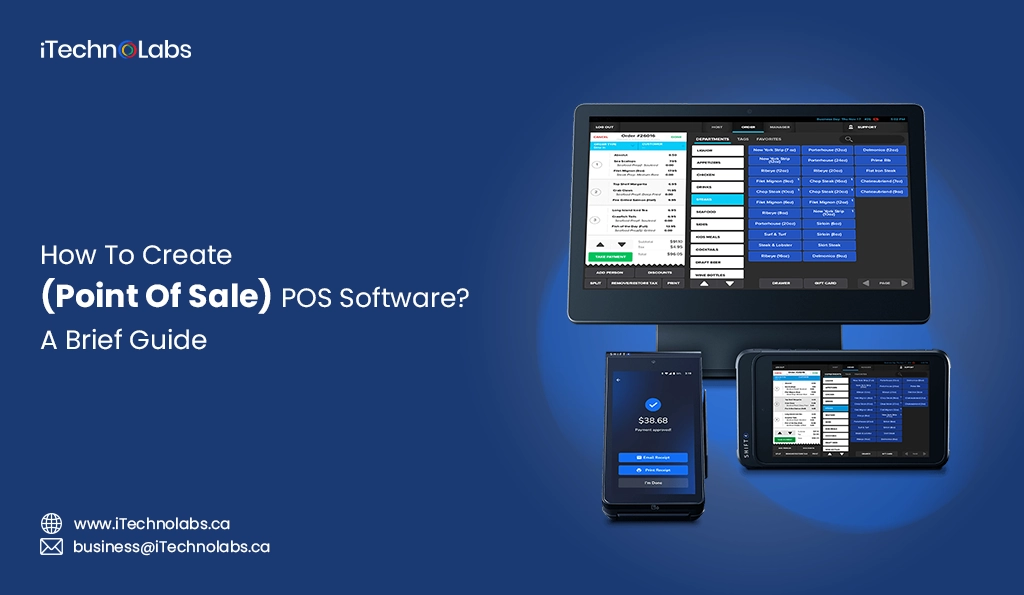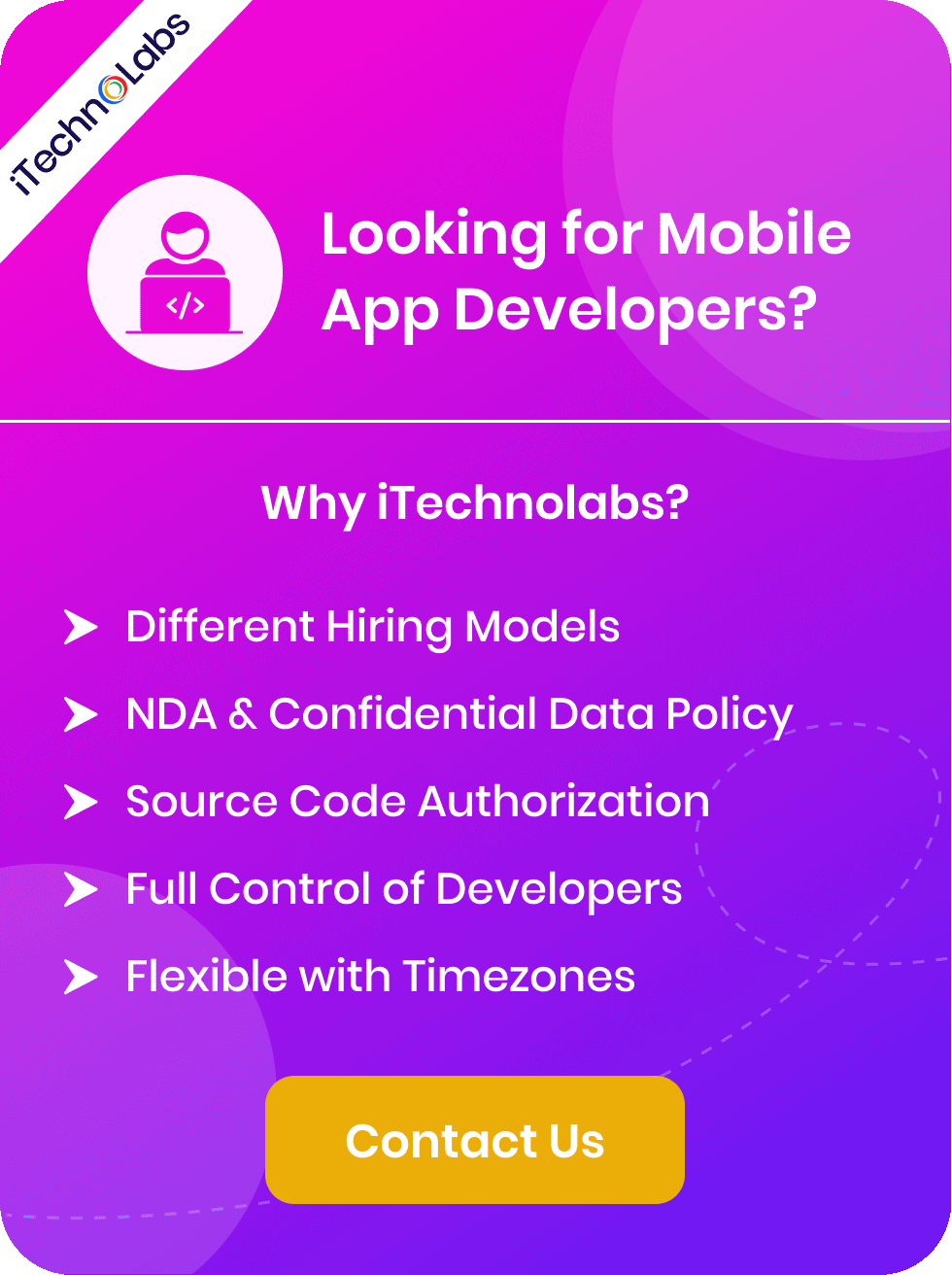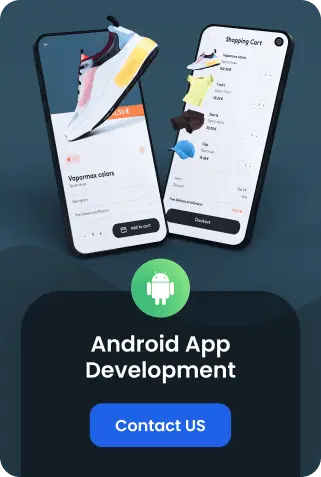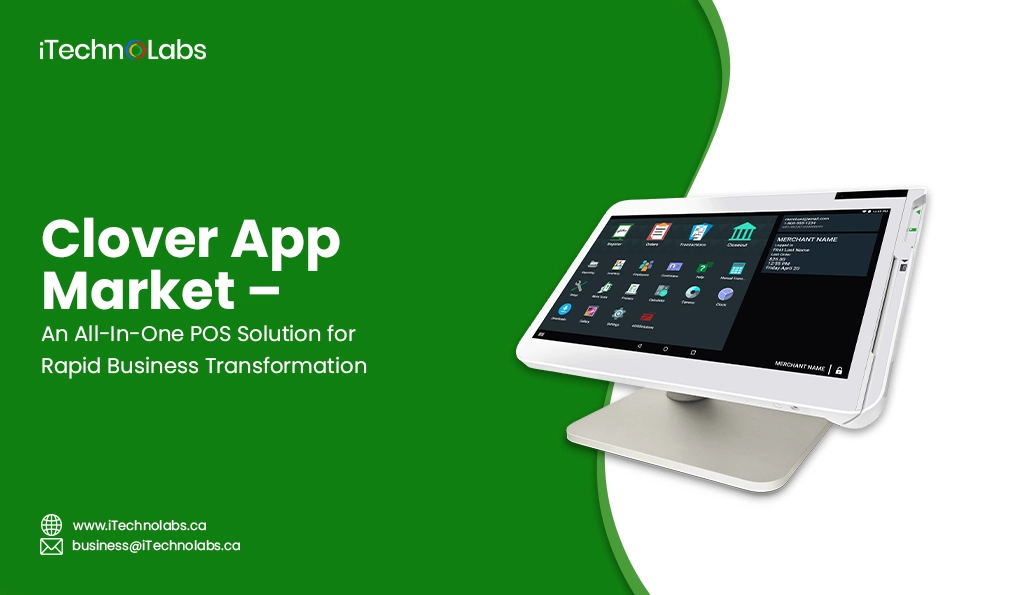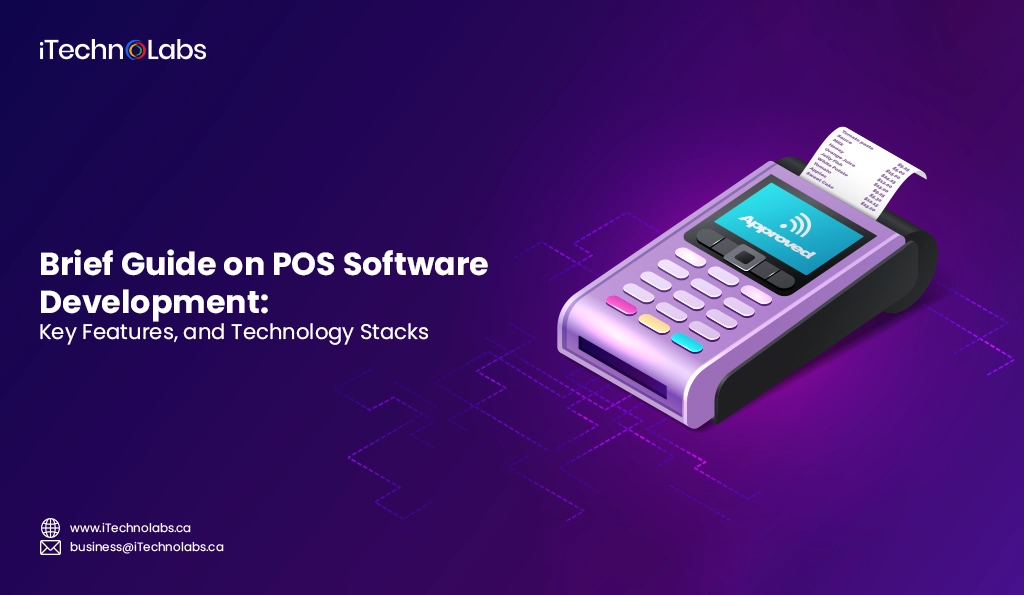Implementing a Point of Sale (POS) software system for your business comes with a myriad of advantages. By streamlining your sales process, this technology not only enhances efficiency at the checkout, making transaction times faster and more reliable, but it also significantly reduces the chances of human error during transactions, thereby increasing accuracy and customer satisfaction. Furthermore, a sophisticated POS system extends beyond mere transaction processing. It possesses the capability to analyze purchasing trends, providing you with a deep dive into consumer behavior and preferences. This system also allows for the tracking of inventory in real-time, ensuring that stock levels are maintained appropriately, reducing the risk of overstocking or stockouts. In addition, it can generate detailed reports, offering you valuable data and insights into every facet of your sales operations. This wealth of information can be pivotal in making informed business decisions, helping to optimize your operations by identifying best-selling products and pinpointing areas that need improvement. Tailoring your product offerings to meet customer demand becomes more manageable with this data, thus significantly enhancing customer satisfaction and loyalty. Ultimately, leveraging the capabilities of a POS system can drive your business’s growth by improving operational efficiency, optimizing inventory management, and making strategic decisions based on accurate data. This investment in technology can be a game-changer in today’s competitive market, setting your business apart and positioning it for success.
Understanding POS Application Development
Point of Sale (POS) systems have become an essential tool for businesses to facilitate efficient and reliable transactions. With the advancement of technology, POS applications have evolved from traditional cash registers to sophisticated systems that offer a wide range of features and capabilities.
Developing a POS application involves understanding the specific needs of a business, as well as the requirements and expectations of customers. It also requires a thorough understanding of technology and the ability to adapt to changing trends and customer preferences.
The process of developing a POS application can be complex and time-consuming, but the benefits it offers make it worth the effort. From simplifying inventory management to providing valuable insights for business decisions, a well-designed POS system can significantly impact the success of a business.
Point Of Sale (POS) Software Market Revenue Worldwide 2018 – 2027 in Bn USD
- 2018: The global POS software market revenue was estimated at approximately 12.9 billion USD, signaling a robust industry poised for growth.
- 2019: A significant rise to around 14.7 billion USD, reflecting increased adoption across retail, hospitality, and other sectors.
- 2020: Despite global challenges, the market saw an increase to about 15.8 billion USD, driven by the surge in e-commerce and contactless transactions.
- 2021: Showing resilience and adaptability, the market revenue climbed to nearly 18.3 billion USD as businesses worldwide accelerated their digital transformation.
- 2022 (Projection): Projected to reach about 19.6 billion USD, with more sectors leveraging POS systems for efficient operations.
- 2023 (Forecast): Expected to continue growing to approximately 21.5 billion USD, with innovations and cloud-based solutions driving the market.
- 2024 (Forecast): Anticipated to hit around 24.3 billion USD, as integration with mobile payments and AI enhances the POS landscape.
- 2025 (Forecast): Forecasted to expand to roughly 27.5 billion USD, underscored by the increasing preference for omnichannel sales approaches.
- 2026 (Forecast): Predicted to soar to about 30.8 billion USD, with sustainability and customer experience being key drivers.
- 2027 (Forecast): Expected to reach an impressive 34.7 billion USD, as businesses globally recognize the value of advanced POS systems in providing superior customer service and operational efficiency.
Different Types Of POS Systems
1. Mobile Point Of Sales (mPOS) Systems
Mobile Point Of Sales (mPOS) systems represent a flexible and cost-effective solution for businesses of all sizes. Operated through a smartphone or tablet application, these systems transform mobile devices into point-of-sale terminals. They are especially beneficial for small to medium-sized enterprises that require mobility, such as food trucks, pop-up stores, and market vendors. mPOS systems not only help businesses reduce costs by avoiding traditional expensive POS hardware but also enhance customer experience with quicker, on-the-spot transactions. Their scalability and ease of integration with various payment methods and business software make mPOS systems a popular choice among modern retailers.
2. Cloud Based Point Of Sales (Cloud POS) Systems
Cloud-based POS systems have gained popularity in recent years due to their flexibility, affordability, and convenience. These systems operate through a web browser or mobile application, allowing businesses to access real-time data from anywhere with an internet connection. With cloud POS systems, retailers can manage multiple stores and inventory levels centrally through a single dashboard, making it ideal for businesses with multiple locations.
3. Terminal POS Systems
Terminal POS (Point of Sale) systems represent the traditional, hardware-based checkout solutions that have become a staple in retail environments worldwide. Typically, these systems are comprised of several key components: a dedicated computer that serves as the system’s brain, a monitor for displaying transactions and product information, a cash drawer for storing cash transactions, a receipt printer for providing customers with physical transaction records, and a barcode scanner to efficiently input product information into the system.
While terminal POS systems have been a familiar sight in stores for decades, technological advancements have significantly evolved their capabilities. Modern terminal POS systems are now equipped with a plethora of advanced features that go beyond basic transaction processing. These include contactless payment options, which allow customers to make purchases using smartphones and contactless credit cards, thereby speeding up the checkout process and enhancing customer satisfaction. Additionally, contemporary systems offer sophisticated inventory management tools, enabling businesses to monitor stock levels in real time, predict inventory needs, and streamline the supply chain. Furthermore, they offer customer data tracking capabilities, which can store and analyze purchasing patterns, thereby providing valuable insights that businesses can use to tailor marketing strategies and improve customer experiences.
Also Read: How to Build a Custom POS Software: Requirements, Type, Features
Hardware Components Required For A POS System
As mentioned earlier, a terminal POS system is composed of several key hardware components. Let’s take a closer look at each one and its role in the overall functioning of the system.
Point Of Sale Software
The software is the central component of any POS system. It manages all the data and processes necessary for completing a transaction, including calculating prices, handling payments, and providing receipts. Modern POS software also offers features such as sales tracking, customer data management, inventory control, and more.
Cash Drawer
A cash drawer is a storage compartment that holds cash, coins, and other forms of payment collected from customers during a transaction. It is typically located under the point-of-sale terminal and can be opened electronically or manually.
Receipt Printer
A receipt printer plays a crucial role in the point-of-sale (POS) system, primarily used to generate receipts for customers once a transaction is finalized. Beyond printing receipts, these versatile devices can also handle the printing of various other documents including detailed reports, order tickets, and vouchers, offering a range of functionalities based on the capabilities of the POS software it is paired with. This enables businesses to efficiently manage transactions and maintain comprehensive records, all while enhancing customer service through the prompt provision of transactional documentation.
Card Reader
A card reader is a hardware device used to read credit or debit cards, and other payment cards like gift cards. It allows for the swiping, dipping, or tapping of these types of cards to initiate a transaction, which then transmits the data from the card to the POS software for processing. With advancements in technology, many modern POS systems now support contactless payment methods, allowing customers to make payments via their mobile devices or smartwatches.
Barcode Scanner
A barcode scanner is an essential device that reads and converts the information contained in a barcode into a digital format. This digital data is then processed by the Point of Sale (POS) software, facilitating a seamless transaction process. The functionality of barcode scanners allows businesses to efficiently scan products and items at the checkout, automatically capturing critical information such as pricing, inventory levels, and product descriptions. This not only streamlines the checkout process, making it faster and more efficient but also significantly reduces the likelihood of human error during item entry. Barcode scanners are available in a variety of forms to suit different business needs. Handheld devices offer flexibility and mobility, enabling employees to move around freely and scan items that are large or difficult to move. Alternatively, some scanners are built directly into the POS terminal, providing a fixed scanning point that can be faster for items that are easily handled at the checkout.
Associate Display
An associate display is a visual element in the Point of Sale (POS) system that provides valuable information to the employee processing a transaction. This display typically shows relevant data such as product descriptions, pricing, and inventory levels, allowing for quick and accurate item selection during checkout. Associate displays are especially useful in businesses where employees are responsible for handling multiple products or items at once. The display can also show critical information such as discounts, promotions, or loyalty program details, providing a convenient reference for employees and allowing them to provide excellent customer service. Additionally, some associate displays come with touchscreen capabilities, further enhancing the speed and accuracy of transactions.
Scale
A scale is a vital component in Point of Sale (POS) systems for businesses that sell items by weight, such as produce or meat. These scales are designed to accurately measure the weight and price of individual items, providing an efficient and precise checkout experience for both customers and employees. The scale can be integrated into the POS system, allowing for easy item entry and calculation of the total purchase price. This integration also ensures that inventory levels are updated accurately, preventing discrepancies and reducing potential errors. Additionally, scales often come with a display for both customers and employees to view the weight and price of items, further enhancing transparency during transactions.
How To Develop a Point Of Sale (POS) Software?
Developing POS software requires a thorough understanding of the business needs and processes. Here are some key steps to consider when developing a POS system:
1. Market Research
The initial phase in creating a Point of Sale (POS) software involves conducting comprehensive market research. This step is crucial to identify and understand the specific needs, preferences, and challenges faced by businesses and their customers in various sectors. By gathering this data, developers can gain valuable insights into what features and functionalities are most desired and needed in a POS system. This research not only informs the development process but also ensures that the final product is tailored to meet the actual demands of the market, thereby enhancing its usability and effectiveness for end-users.
2. Hire a POS Software Development Company
Once the market research is completed, the next step is to hire a reliable and experienced POS software development company. It is essential to choose a company that has a proven track record of developing high-quality and user-friendly POS systems. Make sure to thoroughly research potential companies, read client reviews, and ask for references before making a decision. A good development company will work closely with you to understand your business’s specific needs and customize the software accordingly.
3. Develop Your Software
With the help of a development company, create a detailed plan for developing your POS software. This should include defining the scope, budget, and timeframe for the project. The development process typically involves designing a user-friendly interface and integrating essential features such as inventory management, sales reporting, customer data management, and payment processing. It is also crucial to ensure that the software complies with industry standards and regulations. Regular communication with the development team is crucial to ensure that the project stays on track and meets your business’s requirements.
4. Test Your POS Software
Before launching the software, it is crucial to thoroughly test it for any bugs or glitches. This can help identify and resolve any issues before they affect your business operations. The testing phase should involve a variety of scenarios and simulations to ensure that the software functions smoothly in different situations. It is also essential to gather feedback from beta testers and make necessary improvements based on their suggestions.
5. Deploy
Following the successful completion of the testing and debugging phases, the next critical step is to deploy your Point of Sale (POS) software. This phase involves the meticulous process of installing the software across all relevant devices within your business. It’s not just about installation; comprehensive training for your staff is equally important to ensure they understand how to utilize the software to its full potential, thereby enhancing your operational efficiency.
It is imperative to recognize the importance of preparedness for any unforeseen technical challenges or system failures. Having a robust backup plan in place is not just recommended; it’s essential for continuity and to mitigate any potential disruptions to your business operations. This could involve having backup hardware on standby, or even a secondary system that can be quickly brought online in the event of a major issue.
Moreover, the deployment of your POS software is not a one-time event. To maximize the longevity and efficiency of your system, regular software updates and maintenance are crucial. These updates not only address any newly discovered vulnerabilities or bugs but also introduce new features that can improve user experience and operational efficiency. Therefore, establishing a routine schedule for updates and maintenance checks is an essential practice that will ensure your POS software remains reliable and effective long into the future.
6. Provide Ongoing Support
Once your POS software is deployed and in use, it’s essential to provide ongoing support for your staff. This could involve troubleshooting technical issues, providing additional training for new employees, or assisting with any software-related inquiries.
Having a dedicated support team or contact person readily available can significantly reduce downtime and ensure smooth operations within your business. It is also beneficial to have a knowledge base or user manual available for easy reference, especially for new employees who may not be as familiar with the system.
What Are The Benefits Of A Point Of Sale System?
Implementing a Point of Sale (POS) system can dramatically transform your business operations, offering a suite of benefits that streamline processes, enhance customer experience, and improve your bottom line. Firstly, a modern POS system improves transaction efficiency, significantly reducing checkout times with barcode scanning and immediate payment processing. This level of efficiency directly contributes to a positive customer experience, encouraging repeat business.
Additionally, POS systems offer comprehensive inventory management capabilities. They can track product sales in real time, automatically adjust inventory levels, and provide alerts for low stock, ensuring that your business can meet customer demand without the risk of overstocking.
Another significant benefit is the detailed sales reporting and analytics feature. POS systems can generate real-time reports on sales trends, popular items, and customer buying behavior, enabling business owners to make informed decisions based on actual data. This insight can drive marketing strategies, tailor inventory orders, and improve overall business strategy.
Furthermore, POS systems facilitate better employee management with features that track sales by employee, helping in assessing performance and improving accountability. This feature can also streamline payroll processes and help identify training opportunities.
Read More: Sunmi POS Software Development – Technologies, and Trends
Essential Features In A Point Of Sale Software Application
When considering a POS system, certain features are essential for the optimal functioning of your business. These features include:
Integration with Payment Processing
A modern POS system should seamlessly integrate with various payment methods, including credit cards, debit cards, and mobile wallets. This feature ensures that customers can pay however they prefer, improving the overall checkout experience.
Employee Management
POS systems must encompass functionalities that facilitate comprehensive employee management. This includes capabilities for tracking each employee’s sales performance, efficiently managing their work schedules and streamlining the payroll process. Implementing these features significantly enhances operational efficiency and provides valuable insights into workforce productivity. Moreover, it aids in recognizing the contributions of top-performing employees, while also pinpointing specific areas needing improvement. By leveraging these tools, businesses can optimize their workforce management and drive better overall performance.
Inventory Management
Effective inventory management is crucial for any business to succeed. A POS system should have features that allow for easy tracking of inventory levels and sales trends, helping businesses stay on top of their stock levels. This feature can also generate automated alerts when stock runs low, enabling businesses to make timely replenishments. With accurate and real-time inventory data readily available, businesses can avoid overstocking or stockouts, saving both time and resources.
Customer Management
A POS system should also include customer management features that enable businesses to store and track customer information, purchase history, and loyalty rewards. By utilizing this data, businesses can create personalized marketing campaigns and provide targeted promotions to their most loyal customers, improving customer satisfaction and retention rates.
Sales Reporting & Analytics
Beyond managing inventory and customer interactions, a POS (Point of Sale) system should encompass advanced reporting and analytics features. These capabilities are crucial as they grant businesses a holistic view of their sales dynamics, enabling them to monitor trends, pinpoint areas needing enhancement, and gauge overall performance. The incorporation of real-time data analytics allows for a deeper understanding of key business metrics, such as identifying top-selling products, understanding peak sales periods throughout the day or year, and evaluating employee performance metrics. This wealth of information can be instrumental for businesses in crafting strategic decisions, optimizing operations, and ultimately, propelling growth. By leveraging detailed reports and analytics, businesses can fine-tune their strategies, anticipate market changes, and stay ahead of the competition.
Accessibility To Mobiles/Tablets
Modern POS systems should also include mobile and tablet capabilities, allowing businesses to process transactions and access data from anywhere at any time. This feature is particularly useful for small business owners who need to manage their operations on-the-go or remotely. By having this flexibility, businesses can maintain a competitive edge and enhance customer service by providing faster, more efficient checkout experiences.
Streamlined Purchases & Payments
A contemporary Point of Sale (POS) system goes beyond mere transaction processing; it should streamline the entire purchasing and payment experience for both customers and businesses alike. Essential features like contactless payments, digital wallets, and online ordering systems play a pivotal role in simplifying transactions for customers, offering them a seamless shopping experience. For businesses, these technologies significantly reduce checkout times, thereby increasing operational efficiency and enhancing customer satisfaction. Moreover, these cutting-edge technologies offer the added advantage of improved security. By minimizing the necessity to handle physical cash or credit cards, they mitigate the risks associated with theft and fraud. Integrating such advanced functionalities into a POS system not only propels businesses towards modernization but also aligns them with evolving consumer expectations, setting a new standard in the retail industry.
Customer Relation Management (CRM) Capabilities
In today’s highly competitive market, customer retention is crucial for businesses to thrive. A modern POS system should include CRM capabilities that enable businesses to store and manage customer data effectively. This feature allows businesses to gain insights into customer preferences and purchase history, enabling them to personalize the shopping experience. By understanding their customers better, businesses can develop targeted marketing strategies, loyalty programs, and promotional offers to foster long-term relationships with customers. This not only increases customer retention but also boosts sales and revenue.
Stock Management and Inventory Control
Efficient inventory management is vital for any retail business. An advanced POS system provides real-time stock tracking and inventory control capabilities, allowing businesses to monitor their stock levels accurately. With automatic stock alerts and reorder reminders, businesses can avoid stockouts or overstocking situations, reducing costs and improving overall efficiency. The integration of a barcode scanner into the POS system further streamlines inventory management, eliminating human error and saving time.
Security and Data Protection
With the rise of cybercrime, security has become a major concern for businesses. A modern POS system should include robust security features to protect sensitive customer data and prevent fraudulent activities. These systems use encryption methods to secure data transmission, making it difficult for hackers to decipher information. Additionally, regular software updates can ensure that the POS system stays up-to-date with the latest security protocols.
Reporting and Analytics
A modern Point of Sale (POS) system is equipped with advanced reporting and analytics capabilities, enabling businesses to make data-driven decisions with greater precision. By offering access to real-time sales data, these systems empower businesses to monitor their performance closely, identify emerging trends, and adjust their strategies promptly to stay ahead of the competition. Moreover, these cutting-edge systems provide customizable reports and interactive dashboards, which simplify the process of analyzing complex data, thereby making it easier for business owners and managers to gain insights into their operations. This level of detail and customization facilitates more strategic planning and operational efficiency, ultimately contributing to improved business outcomes.
Advanced Billing System
A modern POS system offers a variety of payment options, including credit and debit cards, mobile wallets, and even cryptocurrency. This flexibility allows businesses to cater to a wider range of customers, enhancing the overall customer experience. Furthermore, these systems often come equipped with advanced billing capabilities such as split payments and installment plans, making it easier for customers to make larger purchases without financial strain. This feature is especially beneficial for businesses that offer high-value products or services, as it enables them to reach a broader customer base and increase sales.
Content Management System
Another valuable feature of modern POS systems is their integration with content management systems (CMS). This allows businesses to create and manage their digital storefronts, providing a more personalized and engaging experience for customers. With the ability to upload product images, videos, and descriptions directly into the system, businesses can easily showcase their products or services to potential customers. Additionally, CMS integration also enables businesses to track customer behavior and preferences, allowing for targeted marketing campaigns and improved customer relationship management.
Loyalty Programs & Discounts
POS systems also offer the option to implement loyalty programs and discounts, which can be a powerful tool for customer retention and acquisition. By offering rewards or discounts to loyal customers, businesses can incentivize repeat purchases and foster brand loyalty. These programs can be easily managed through the POS system, providing real-time data on customer behavior and allowing for targeted promotions. Additionally, many modern POS systems offer the option to integrate with third-party loyalty programs, making it even easier for businesses to reward their customers and build lasting relationships.
Barcode Scanner and Inventory Management
The integration of barcode scanners into POS systems has greatly improved inventory management for businesses. By scanning product barcodes, businesses can easily track and manage inventory levels, reducing the risk of over or understocking products. This not only helps to streamline operations but also reduces the chances of lost sales due to stock shortages. Additionally, some POS systems offer predictive analytics based on inventory data, allowing businesses to make more informed purchasing decisions.
Credit Card Reader and Payment Processing
With the rise of cashless transactions, having a credit card reader integrated into a POS system is essential for businesses. By offering multiple payment options, businesses can cater to a wider customer base and improve the overall buying experience. Furthermore, integrated payment processing allows for faster and more secure transactions, reducing the risk of fraud or errors. Many modern POS systems also offer contactless payment options, such as mobile wallets or NFC-enabled cards, making the checkout process even more convenient for customers.
Cloud Integration and Remote Management
Cloud-based POS systems have become increasingly popular in recent years, offering businesses the ability to manage their operations remotely. With cloud integration, businesses can access real-time sales data, track inventory levels, and make changes to their menu or pricing from anywhere with an internet connection. This not only provides convenience for business owners but also allows them to stay updated on their operations even when they are not physically present.
Pricing Model For POS System
The pricing model for POS systems can vary, depending on the features and capabilities of the system. Some vendors offer a one-time fee for purchasing the software, while others have a monthly subscription model. Additionally, there may be additional fees for hardware, support and maintenance services, or integrations with third-party apps.
1. One-Time Full Payment
This business model requires customers to pay a one-time fee to purchase the Point of Sale (POS) system, after which they own the software outright. This approach can be particularly appealing for businesses that possess a sizable initial budget and prefer to avoid ongoing monthly fees. Opting for this model allows companies to fully integrate the POS system into their operations without worrying about additional future costs, making it a strategic choice for those looking to minimize long-term expenses.
2. Pay Per Month
Under this subscription-based model, businesses are required to pay a monthly fee to access and utilize the POS (Point of Sale) system along with its various features. This payment structure is particularly advantageous for small businesses operating on tight budgets, as it provides a cost-effective solution without the need for significant upfront investment commonly associated with purchasing POS systems outright. However, it’s important to note that this option might come with certain limitations, such as restrictions on the number of transactions that can be processed within a month or a cap on the number of users who can access the system. Therefore, while this model offers affordability and flexibility, businesses should carefully consider these potential constraints when deciding if this is the right choice for their operational needs.
Technology Stack For Point Of Sale Software Application Development
When it comes to building a Point of Sale (POS) software application, there are various technologies and tools available. These technologies not only determine the performance and functionality of the system but also affect its scalability, security, and user experience. Some common technology stacks used for POS systems include:
- Front-end Technologies: Front-end development is responsible for creating the visual interface that users interact with. Some commonly used front-end technologies for POS systems include HTML, CSS, and JavaScript.
- Back-end Technologies: The back-end of a POS system handles the server-side logic and data storage. Popular options for building the back-end include programming languages like Java, Python, or Ruby on Rails.
- Database Management Systems (DBMS): DBMS is used to store, manage and retrieve data in a POS system. Some popular options for DBMS include MySQL, PostgreSQL, MongoDB, or Oracle.
- Cloud Services: Cloud services can provide a cost-effective solution for hosting the POS system and its data. Popular cloud service providers include Amazon Web Services (AWS), Microsoft Azure, or Google Cloud Platform.
- Application Programming Interfaces (APIs): APIs are used to connect the POS system with other applications and services, such as payment gateways or inventory management systems.
- Mobile Development: With the rise of mobile devices, many businesses prefer a mobile-friendly POS system. Popular frameworks for developing cross-platform mobile applications include React Native, Flutter, or Ionic.
- Security Measures: To ensure data protection and prevent cyber-attacks, POS systems must incorporate security measures such as encryption, firewalls, or intrusion detection systems.
How Much Does It Cost To Develop A Point Of Sale Software System?
The cost of developing a Point of Sale (POS) software system can vary widely depending on several factors such as the complexity of the system, customized features, the choice of technologies, and whether it is built in-house or outsourced. For a basic POS system with standard features, small to medium-sized businesses might expect to spend anywhere from $10,000 to $50,000. More sophisticated systems with advanced features such as custom integrations, inventory management, and customer relationship management capabilities could push costs upwards of $100,000 or more. Additionally, businesses should also budget for ongoing costs related to maintenance, updates, and technical support.
When considering the development of a Point of Sale (POS) software system, the cost breakdown can be understood through several key points:
- Initial Development Costs: The initial costs for developing a new software application can range significantly, from as low as $10,000 to well over $100,000. Several factors influence this wide price range, including the overall complexity of the system being developed, the specific technology stack selected for the project, and the decision of whether to conduct the development with an in-house team or to outsource it to a specialized agency. The choice between these options can have a substantial impact on both the initial investment required and the quality of the final product.
- Custom Features: Adding custom features to a software project, such as advanced inventory management systems, comprehensive customer relationship management (CRM) tools, or bespoke integrations with existing business systems, can significantly increase the project’s overall costs. These personalized functionalities often require additional research, development time, and testing to ensure they meet the specific needs of the business while seamlessly integrating with the core application.
- Technology Choices: The selection of technologies for the project, whether it involves choosing a cloud hosting provider (such as AWS, Azure, or Google Cloud), a framework for mobile development (like React Native, Flutter, or Ionic), or security measures (including state-of-the-art encryption techniques and robust firewalls), can greatly influence the project’s budget. Each of these technology choices comes with its own set of costs, benefits, and potential limitations, making it crucial for businesses to carefully consider their options and select the most appropriate technologies for their specific needs.
- Maintenance and Updates: Beyond the initial development phase, the ongoing maintenance, timely updates, and provision of technical support are essential for ensuring the operational stability and security of the software. Regularly updating the application to address new security threats, fix bugs, and add new features can add significantly to the total cost of ownership over the software’s lifecycle. However, these investments are critical for maintaining user trust and satisfaction.
- Project Scale and Team Size: The overall scale of the project and the size of the development team required to bring it to fruition are also significant factors in determining the project’s total development costs. Larger projects with more complex requirements may necessitate a larger, more specialized team, which can increase labor costs. Conversely, smaller projects or those using more streamlined development methodologies may be able to reduce costs by employing a smaller, more agile team.
Suggested: How Much Does it Cost to Create An App
How can iTechnolabs help you to build a POS Software System?
At iTechnolabs, we understand the importance of choosing the right technologies and approaches for your project. Our team of experienced professionals can provide valuable insights and guidance on selecting the most suitable technologies to meet your specific needs and budget.
We also offer ongoing maintenance and support services to ensure the long-term success of your software. Our team stays updated on the latest security threats and industry developments, allowing us to proactively address any issues that may arise and keep your software running smoothly.
- Custom Development Solutions: iTechnolabs offers tailor-made software solutions designed to meet the unique requirements of your sales system, ensuring that it aligns with your business goals and processes.
- Expertise in Latest Technologies: Our team is proficient in the latest technologies and frameworks, allowing us to create efficient, secure, and scalable sales software systems.
- Agile Development Practices: We follow agile development methodologies to ensure timely delivery of your project, while also accommodating changes and feedback throughout the development process.
- Comprehensive Testing & Quality Assurance: iTechnolabs conducts thorough testing and quality assurance checks to ensure the software is reliable, bug-free, and performs optimally under various conditions.
- Cost-effective Solutions: By leveraging our expertise and employing strategic development practices, we offer cost-effective solutions that do not compromise on quality or functionality.
- Ongoing Support and Maintenance: Our commitment extends beyond the initial development phase, providing ongoing support and maintenance to ensure your sales software system remains up-to-date and operates seamlessly.
- Security & Compliance: We prioritize the security of your sales software system, implementing robust security measures and ensuring compliance with relevant regulations and standards.
Are you planning to build POS software?
iTechnolabs elevates your sales software system with a myriad of benefits, ensuring an optimal blend of performance, reliability, and scalability. By partnering with us, you gain access to a team of experts specialized in developing custom solutions that perfectly align with your business objectives. The agility of our development process allows for flexibility in accommodating changes and incorporating feedback, ensuring the final product truly meets your needs. Our commitment to incorporating the latest technologies means your sales system will not only be efficient and secure but also future-proof, capable of adapting to evolving market demands. Comprehensive testing and quality assurance guarantee that the software you receive is of the highest caliber, minimizing downtime and enhancing user satisfaction. Furthermore, iTechnolabs’ focus on cost-effective solutions ensures that you achieve these premium benefits without compromising your budget.
- Customization to Fit Your Business Needs: iTechnolabs specializes in tailoring sales software solutions that are uniquely designed to meet the specific requirements of your business, ensuring a perfect fit for your sales strategies and operations.
- Enhanced Efficiency: With our sales software system, streamline your sales processes, automating routine tasks and allowing your sales team to focus on what they do best – selling. This leads to improved productivity and efficiency.
- Data-Driven Insight: Leverage advanced analytics and reporting tools that provide you with valuable insights into your sales activities, helping you make informed decisions that drive business growth.
- Improved Customer Relationship Management: Our sales software includes features that help you better manage customer relationships, from tracking interactions to understanding customer needs, resulting in higher customer satisfaction and loyalty.
- Scalability: As your business grows, our sales software system easily scales to meet increasing demands without the need for significant additional investments, ensuring you can expand with ease.
- Secure Data Management: We implement the latest in security protocols to ensure that your and your customers’ data remains safe, secure, and compliant with global standards, giving you peace of mind.
- Cost-Effectiveness: By optimizing sales processes and reducing the need for manual intervention, our sales software system can significantly decrease operational costs, contributing to a healthier bottom line.
Important: Know About POS Systems and Develop Your Own POS System
Conclusion:
Our sales software solution offers a comprehensive suite of features and benefits that can help take your business to the next level. From enhanced efficiency to improved customer relationship management, our software is designed with your specific needs in mind. Choose our sales software system for a perfect fit that drives growth, saves costs, and ensures data security.
